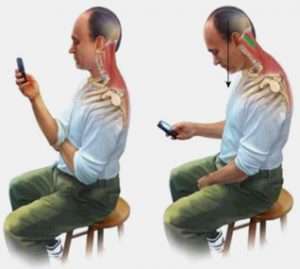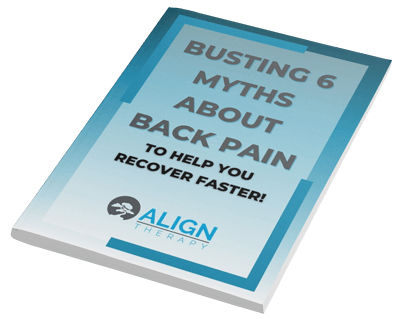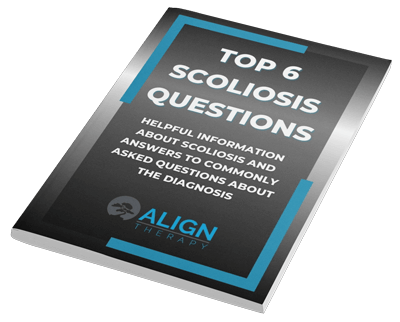June is National Scoliosis Awareness Month. As such, it is one of my favorite months of the year! This month gives me a chance to get the word out about one of my passions: Scoliosis Treatment!
Since 2015, we have been dedicated to the proactive treatment of scoliosis to help those with spinal deformity avoid surgery, reduce pain, and improve posture. I have seen some amazing results and want to share how we stop scoliosis from getting worse.
Do you fall into one of these categories of people who are worried about scoliosis?
- Adolescent (teen or pre-teen) still growing.
- Diagnosed between age 10 and 18
- With or without pain in the back
- Looking at surgery or bracing if the curve gets worse.
- Been told to wait and see if it gets worse.
- Adult with scoliosis that is painful.
- Can be painful anywhere in the back
- Worried about the pain getting worse and reducing quality of life.
- Concerned about chronic pain
- Adult with scoliosis that IS getting worse.
- This could be because of degenerative scoliosis
- May or may not have had scoliosis as a child
- Noticing posture changes or body shape changes
- May have been told to wait until it is bad enough for surgery.
If any of the above sound like you, then you are in luck! There are proactive things you can do that are more effective than the old “wait and see” approach.
Research
Now, lets talk quickly about the research that is out there to back these treatments. There are many studies out there looking at the effectiveness of scoliosis specific exercise on progression. Most of these are done with Adolescents, as they are still growing and we know there is a higher risk of progression.
Adult Scoliosis on the other hand has many things that influence its progression. Everything from arthritis to past injuries, and even bone density can affect the progression in adults, so the research is difficult. With that said, we still see great results in our adult patients. Even when it has been going on for some time, we can still see improvements in pain, posture, and quality of life.
The following are treatments we have found to be effective and are backed by the latest research.
Bracing:
Without a doubt, in adolescents with scoliosis, once it gets over a certain degree, bracing is effective. So effective in fact that if a child is prescribed a brace, and they are consistent in wearing it, the chance of avoiding surgery is over 90%! That is pretty good. 
The key is ….they have to WEAR IT!! Bracing doesn’t work, surprisingly, if the brace is not worn and sits in the corner. Most of the time the brace is worn more than 14 hours per day.
Bracing works by providing pressure on the spine to stop it from getting worse. As the brace puts pressure on the spine, it allows the growth plates in the spine to grow more normal and straighter. Therefore, it is crucial to wear it. Without this pressure, the spine continues to grow into the scoliosis.
In Adults, bracing is not as common. Because the spine is not actively growing, and may actually be losing height, the purpose of bracing is different. With adults, bracing is trying to add an external support to stop gravity from winning.
Bracing in these scoliosis patients can help reduce pain and can take the load off the back during activities that are done during the day. It is not meant to be worn as long as the braces for kids.
Braces for adults can be custom molded to the individual, or can be prefabricated.
Scoliosis Specific Exercise
Over the last few decades, more emphasis has been placed on conservative management of scoliosis around the world. Europe is way ahead of the United States and has developed 7 different treatment approaches to treating scoliosis.
Two of these methods, the Schroth Method and the SEAS Approach, have been researched more than the others. They have been shown to be effective in reducing or stopping the curve from getting worse.
Treatment specific to scoliosis should be performed by someone who is trained and certified in that specific technique. Without that training the quality of the treatment is questionable and effectiveness is reduced.
Important Point! Does general physical therapy help reduce progression of the curve? The answer in the research is “NO” it does not. Only physical therapy interventions following one of the specific schools of scoliosis specific exercise have shown any effect on stopping progression of the curve. Physical Therapy performed without this specific training has no effect on reducing progression.
Frequently, I will hear patients who live further away or whose insurance we don’t take tell me they “found someone” closer to their home, or someone in-network who treats scoliosis. After asking what training they have in scoliosis I usually find out it is minimal to none. Just being good at treating back pain doesn’t make you a good scoliosis therapist.
Now, I am not saying general physical therapy can’t help with pain, because it can. But if you are looking to stop it from getting worse, you usually are looking at 2 options. The Schroth Method or the SEAS Approach!
The Schroth Method
When I started my practice, I immediately went for training in the Schroth Method. With it being the most researched and most comprehensive treatment approach, I wanted to start there.
This method was developed in Germany by Katharina Schroth who had scoliosis and noticed different movements and postures reduced the look of her curve. Subsequently, her daughter applied these principles into a formal protocol.
The idea behind the Schroth Method is to use the muscles to act like an internal brace and actively correct the scoliosis posture. The muscles are retrained to hold a better posture fighting against the scoliosis curve, helping to reduce the forces that lead to progression.
It takes a little while to learn because the movements are complex and very specific to each individual curve. The main goal is to get the patient to be able to independently perform corrective exercise and do this at home on a regular basis.
More research needs to be done on the Schroth Method, but many of the studies are showing it is possible to not only stop progression of the curve, but to reduce the curve slightly as well. It is not uncommon to see a reduction of 5-10 degrees if it is done consistently and done well.
Schroth training encompasses Adolescent Idiopathic and Adult scoliosis, along with painful scoliosis and post surgical treatment. This is a great option for adult scoliosis patients looking to reduce pain or reduce progression.
The SEAS Approach
Developed in Italy by the Italian scientific spine institute, the SEAS Approach focuses on active self correction of the curve in all activities. More research is being done on this approach and is showing promising results.
[video_player type=”youtube” style=”1″ dimensions=”560×315″ width=”560″ height=”315″ align=”center” margin_top=”0″ margin_bottom=”20″ ipad_color=”black”]aHR0cHM6Ly95b3V0dS5iZS9mZXgwakp0TU1fTQ==[/video_player]
The postural corrections in the SEAS Approach are specific to each individual curve, just like the Schroth Method, but movements are simpler. The person is taught how to correct their posture, and then this correction is “challenged” by different movements.
They are expected to perform active correction in functional tasks during the day, with the idea to retrain the muscles to hold a more corrected posture.
This approach is especially helpful for younger children who have difficulty with the complexity of the Schroth Method. The movements are easier and can be done with less equipment.
SEAS can be done with adults, but I find the Schroth Method to be more effective for this population. The principles of active self correction taught in the SEAS Approach can definitely be beneficial for all ages, and we use them in conjunction with the Schroth Method for optimal results.
Watching Your Posture
While this is not a specific protocol or method for scoliosis treatment, keeping good posture is helpful to keep the muscles active. The more active the muscles the more they fight against gravity. Gravity is one of the enemies of the scoliosis spine because of its tendency to cause more compression.
Now, just holding good posture won’t, by itself, stop progression of the curve, but poor posture definitely will contribute to a higher risk of progression. If the spine is allowed to fall into the scoliosis curve uncontrolled, more progression is likely to occur. The forces that contribute to progression are left unchecked.
Posture is an epidemic in our society, and many aches and pains that we treat outside of scoliosis can be helped as well through improving posture.
Good Nutrition and Supplements
Currently, there is no strong evidence that diet or supplementation of vitamins helps to reduce progression of the curve. It does make sense, however, that improving nutrition to include calcium, and vitamin D, along with eating a balanced nutritious diet will help with bone health. I usually suggest my patients eat a good diet and get tested for vitamin D deficiency.
There are many other ways I have heard about to stop progression of the curve, but the ones discussed here are the ones that have at least some research to support them. Be careful of treatments that claim to have miraculous results without research to support what they are doing.
If you would like to learn more about how to Stop Scoliosis from Getting Worse, please email me at david@aligntherapyutah.com, and we can discuss YOUR specific problem.
You can also learn more about scoliosis specific exercise by going to our scoliosis portal by clicking HERE, or downloading a free report on scoliosis by clicking HERE.
Thanks for reading!
David Butler, Physical Therapist



